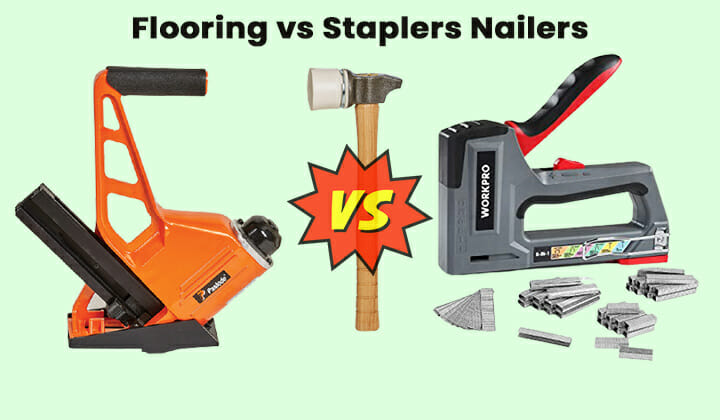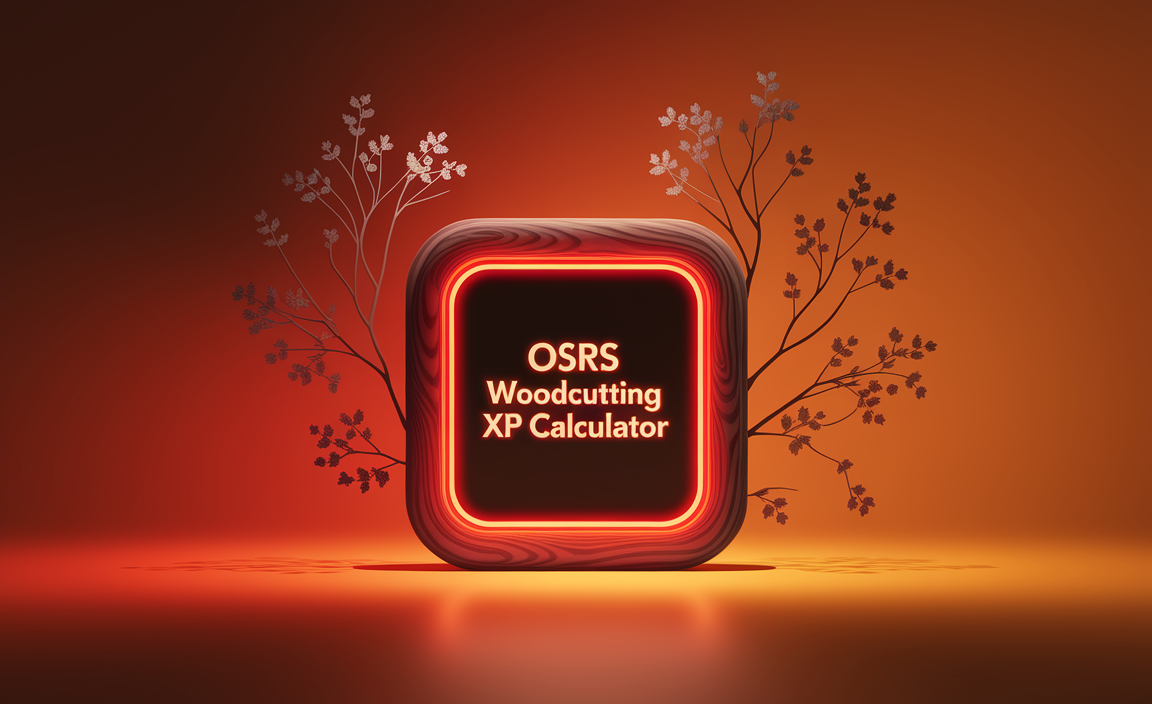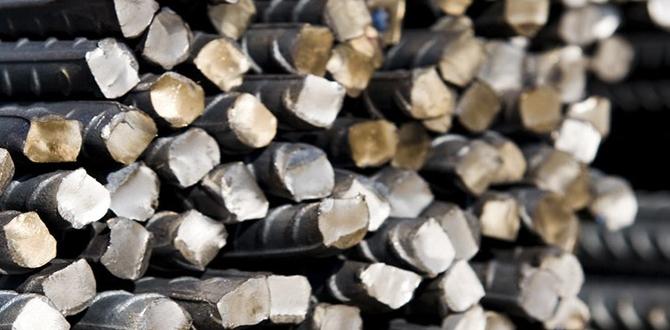Nail gun maintenance mistakes are common for beginners, but avoiding them is easy with a few key tips. Proper care keeps your nailer running smoothly, preventing jams, damage, and safety hazards. Learn the simple steps to maintain your nail gun and extend its lifespan for all your DIY projects.
Hey there, DIY warriors and woodworking fans! Jack Shaffer here, your trusty guide from Nailerguy. Ever feel a little lost when it comes to keeping your nail gun in tip-top shape? You’re not alone! These powerful tools can seem a bit intimidating, and when something goes wrong – like a jam or a slow-firing nail – it’s easy to feel frustrated. But here’s the good news: keeping your nail gun happy and healthy doesn’t require a degree in engineering. In fact, with a few simple habits, you can avoid the most common mistakes beginners make and ensure your nailer is always ready for action. We’ll walk through the essential, easy-to-follow steps to keep your tool performing its best, project after project. Let’s dive in and make sure your nail gun treats you right!
Table of Contents
Why Nail Gun Maintenance Matters More Than You Think
Think of your nail gun like a trusty sidekick for your woodworking adventures. You rely on it to drive nails accurately and powerfully, making your projects come together faster and with a cleaner finish. But just like any hard-working tool, it needs a little TLC to perform its best. Neglecting basic maintenance isn’t just about a minor inconvenience; it can lead to a cascade of problems.
When you skip those simple cleaning or lubrication steps, you’re essentially asking your nail gun to work harder than it has to. This can result in:
- Jams: A leading cause of frustration, jams can often be traced back to a build-up of debris or a lack of lubrication.
- Reduced Power: Your nail gun might start firing nails weakly or not at all, slowing down your work and compromising your project’s integrity.
- Damage to the Tool: Over time, friction from dirt and grit can wear down internal parts, leading to costly repairs or premature replacement.
- Safety Hazards: A poorly maintained nail gun is more prone to misfires or unexpected malfunctions, which can be dangerous.
The good news is that most of these issues are preventable! By understanding and avoiding common nail gun maintenance mistakes, you’ll not only save time and money but also ensure your tool is a reliable partner in your DIY journey.
Common Nail Gun Maintenance Mistakes Beginners Make
As a beginner with a new nail gun, it’s easy to get caught up in the excitement of building. Maintenance might seem like tedious work that can wait. However, these are precisely the moments when good habits are formed. Let’s break down the common pitfalls so you can steer clear of them.
Mistake 1: Never Reading the Manual
I know, I know. The manual isn’t the most thrilling read. But your nail gun’s manufacturer has put together specific instructions for caring for that exact model. What works for one type of nailer might not be ideal for another. The manual is your golden ticket to understanding:
- Recommended lubricants and cleaning agents.
- Specific disassembly instructions for cleaning.
- Manufacturer-recommended maintenance schedules.
- Troubleshooting common issues for your model.
Seriously, give it a quick skim. It could save you a lot of headaches. For example, many manufacturers provide online PDF versions of their manuals, often accessible through a quick search on their website.
Mistake 2: Skipping Lubrication (or Using the Wrong Type)
This is a big one! Air-powered nail guns (pneumatic) rely on a thin film of oil to keep their internal components moving smoothly and prevent wear. If your nail gun uses a compressor, the air might be dry, or if it doesn’t have an integrated oiler, you need to add oil manually.
Why it’s a mistake: Without lubrication, metal parts grind against each other. This creates friction, heat, and premature wear. Over time, this can even cause parts to seize up.
What to do instead: Always use the type of lubricant recommended by the manufacturer. For most pneumatic nailers, a few drops of dedicated tool oil (often a lightweight pneumatic tool oil) are sufficient. If your nailer has an air-line lubricator, ensure it’s filled with the correct oil. For cordless or electric nailers, check your manual – some may not require oil, while others might have specific greasing points.
Mistake 3: Forgetting to Clean It Regularly
Wood dust, debris, and even old lubricant can build up inside and outside your nail gun. This gunk can interfere with the moving parts, leading to jams and performance issues. Think of it like dirt clogging up a car’s engine – it just won’t run as well.
Why it’s a mistake: A dirty nail gun is an inefficient and potentially unreliable nail gun. Debris can get into the firing mechanism, damage seals, and make the tool sluggish.
What to do instead: Make it a habit to wipe down the exterior of your nail gun after each use. More importantly, perform a deeper clean periodically. This usually involves wiping down the magazine, piston, and tip, and ensuring the air exhaust (if applicable) is clear.
Mistake 4: Not Purging the Air Line (for Pneumatic Nailers)
If you use an air compressor to power your nail gun, water and oil can accumulate in the air lines and the tool itself. This moisture is bad news!
Why it’s a mistake: Compressed air often contains moisture. When this moisture enters your nail gun, it can cause corrosion and rust on internal metal parts. It can also lead to freezing in cold conditions or affect the lubricant.
What to do instead: Before connecting your nail gun and at the end of a work session, disconnect the air hose and briefly open the coupler to “purge” any accumulated moisture or debris from the line. Regularly drain the water from your air compressor’s tank, too! This is a crucial step for tool longevity.
Mistake 5: Operating Low on Air Pressure (or Too High!)
Your nail gun has an optimal operating pressure range, usually specified in the manual. Running it too low or too high can cause problems.
Why it’s a mistake:
- Too Low: Nails won’t drive fully, leading to frustrating countersinking issues or incomplete drives.
- Too High: This can cause excessive wear on internal components, damage the workpiece, and even lead to dangerous recoil or misfires.
What to do instead: Use a pressure gauge on your air regulator (if using a compressor) to set the pressure within the manufacturer’s recommended range. Start at the lower end of the range and gradually increase it until nails are driven consistently to your desired depth. Always consult your manual for specific PSI (pounds per square inch) recommendations.
Mistake 6: Forcing Nails or Using the Wrong Size
Nail guns are designed for specific nail gauges and lengths. Trying to jam a different size into the magazine or forcing the gun when a nail is slightly misaligned is asking for trouble.
Why it’s a mistake: Using the wrong nail size can cause jams, damage the magazine feed mechanism, or lead to incomplete drives. Forcing the gun can damage the tip or internal firing components.
What to do instead: Always use the nail size (gauge and length) that your nail gun is designed for. Refer to your manual for specifications. If a nail jams, don’t force it. Follow the proper jam-clearing procedure for your model.
Mistake 7: Ignoring Faint Squeaks or Unusual Noises
Your nail gun might start making a slight squeak or a different sound during operation. This isn’t just background noise; it’s often an early warning sign.
Why it’s a mistake: These subtle changes are usually the first indicators that something needs attention, like lubrication or a minor adjustment. Ignoring them allows the problem to escalate.
What to do instead: If you hear an unusual noise, stop using the tool and investigate. It’s likely time for a bit of lubrication or cleaning. A good rule of thumb is to lubricate if you hear squeaking or if the driving action seems less “snappy” than usual.
Step-by-Step Guide to Basic Nail Gun Maintenance
Now that we know what not to do, let’s get to the good stuff: how to properly maintain your nail gun. This guide focuses on common pneumatic (air-powered) nailers, as they are most common for DIYers and require the most consistent maintenance. Cordless and electric models have slightly different needs, but many principles apply.
Step 1: Safety First! Always Disconnect Power
This is non-negotiable. Before you do anything else, ensure the tool cannot accidentally fire.
- For Pneumatic Nailers: Disconnect the air hose from the nail gun.
- For Cordless Nailers: Remove the battery pack.
- For Electric Nailers: Unplug the power cord.
Having the correct safety gear is also paramount. Always wear safety glasses! A hard hat and ear protection are also good ideas for extended use. The Occupational Safety and Health Administration (OSHA) provides extensive guidelines on power tool safety, which is a great resource to browse: OSHA PPE Standards.
Step 2: Inspect and Clean the Exterior
Start with a visual inspection. Look for any obvious damage or dirt accumulation.
- Use a soft, dry cloth to wipe down the entire exterior of the nail gun.
- Pay attention to vents and exhaust ports (if present) – clear away any dust or debris that could impede airflow.
- For stubborn grime, you can use a slightly damp cloth, but ensure no water gets into internal mechanisms.
Step 3: Clean the Magazine
The magazine is where the nails are held and fed. It’s prone to dust and debris.
- Open the magazine as much as possible (some models allow it to slide or open wide).
- Use a soft brush or a dry cloth to remove any sawdust, wood shavings, or old nail fragments from the interior.
- Ensure the feed path for the nails is clear and smooth.
Step 4: Lubricate (Pneumatic Nailers)
This is a vital step for pneumatic tools. Many modern nailers have integrated oil reservoirs that connect to the air line via a lubricator. If yours doesn’t, or if you want to give it an extra boost, you can manually add oil.
- Check your manual! It will specify the type of oil and the method for lubrication for your specific model.
- Manual Lubrication: Typically, you’ll add 2-3 drops of pneumatic tool oil into the air inlet port (where the hose connects).
- Integrated Lubricator: If your tool or air line has a lubricator, ensure it’s filled with the correct oil.
- Frequency: Lubricate every 4-8 hours of use, or if you hear squeaking. For intermittent use, a quick oiling before each project is a good habit.
Note: Some cordless or electric nailers, especially those using spring-loaded mechanisms, do not require oiling and may even be damaged by it. Always refer to your manual.
Step 5: Clean the Piston and Cylinder Area
This is where the magic happens! The piston drives the nail. Keeping this area clean ensures smooth operation.
- Follow your manual’s instructions for accessing the piston area. This might involve a simple screw removal at the top of the tool.
- Once accessed, gently wipe the exterior of the piston and the inside of the cylinder bore with a clean, lint-free cloth.
- Do NOT use harsh solvents or excessive force here. A light wipe-down is usually all that’s needed.
- Ensure there’s no old oil mixed with dirt or debris.
Step 6: Check and Clean the Nose/Contact Trip
The nose of the gun is what contacts the workpiece, and the trigger mechanism (contact trip) is what initiates firing.
- Gently wipe the nose of the nail gun to remove any dust or residue.
- Operate the contact trip (the part that you press against the wood) a few times to ensure it moves freely. If it feels sticky, a tiny drop of lubricant (if recommended by the manual for this area) might help, or it might indicate internal debris.
Step 7: Reassemble and Test (Carefully!)
Once cleaning and lubrication are done, put everything back together securely.
- If you disassembled any parts, ensure they are correctly reassembled according to your manual.
- For Pneumatic Nailers: Reconnect the air hose. Set your air pressure to the lower end of the recommended range.
- For Cordless/Electric Nailers: Reinstall the battery or plug in the power cord.
- Test Fire: Point the nail gun at a piece of scrap wood in a safe direction. Fire a few nails to ensure it’s working correctly, sounds normal, and drives nails to an acceptable depth. Adjust air pressure as needed.
Troubleshooting Common Issues
Even with proper maintenance, you might encounter a hiccup. Here’s how to tackle a couple of the most frequent problems beginners face:
Problem: Nail Gun Isn’t Firing
- Check Power Source: Is the air hose securely connected (pneumatic)? Is the battery charged and correctly inserted (cordless)? Is it plugged in (electric)?
- Check Air Pressure (Pneumatic): Is the pressure too low? Increase it gradually.
- Check Safety Features: Is the contact trip being pressed firmly against the wood? Is the safety latch engaged (if applicable)?
- Check for Jams: A jam can prevent firing. Proceed to jam clearing (see below).
- Internal Issues: If none of the above works, there might be an internal mechanical issue requiring professional attention.
Problem: Nails Are Not Driving Adequately (Under-driven)
- Check Air Pressure (Pneumatic): This is the most common culprit for under-driven nails. Increase air pressure slightly.
- Check Nail Strips: Are you using the correct nail size and type? Are the nails damaged or bent?
- Tool Angle: Ensure the nail gun is held directly perpendicular to the surface. An angle can affect drive depth.
- Workpiece Material: Denser woods or harder materials might require slightly higher pressure.
Problem: Nails Are Jamming Frequently
This is frustrating, but often fixable. First, disconnect power!
- Clear the Jam: Most nail guns have a straightforward jam-clearing mechanism. Consult your manual. Usually, it involves opening a latch or sliding a cover to access the nail path and carefully removing the offending nail. Never force it!
- Inspect Nails: Ensure you are using high-quality nails of the correct size. Damaged or bent nails are a common cause of jams.
- Check the Magazine: Is the magazine clean and free of debris? Is the feeder mechanism working smoothly?
- Lubrication: Lack of proper lubrication can cause parts to stick, leading to jams.
- Air Pressure (Pneumatic): Sometimes, running too low on air pressure can cause nails to misfeed and jam.
Comparing Maintenance Needs: Pneumatic vs. Cordless vs. Electric
While the core principle of keeping tools clean and functional is universal, different types of nail guns have slightly varied maintenance routines and common pitfalls.
| Nail Gun Type | Primary Maintenance Focus | Common Beginner Mistakes | Typical Frequency of Basic Tasks |
|---|---|---|---|
| Pneumatic (Air-Powered) | Lubrication, air pressure, moisture management in air lines. | Skipping lubrication, using wrong oil, neglecting air line moisture, incorrect air pressure. | Lubricate: every 4-8 hrs use. Clean exterior: after each use. Deep clean: monthly or as needed. Purge air lines: daily/end of use. |
| Cordless (Battery-Powered) | Battery care, keeping dust out of battery contacts and vents, tool cleanliness. | Not charging batteries properly, storing batteries in extreme temperatures, neglecting to clean battery contacts. | Clean exterior: after each use. Clean battery contacts: as needed. Battery maintenance: per battery manufacturer guidelines. |
| Electric (Corded) |


